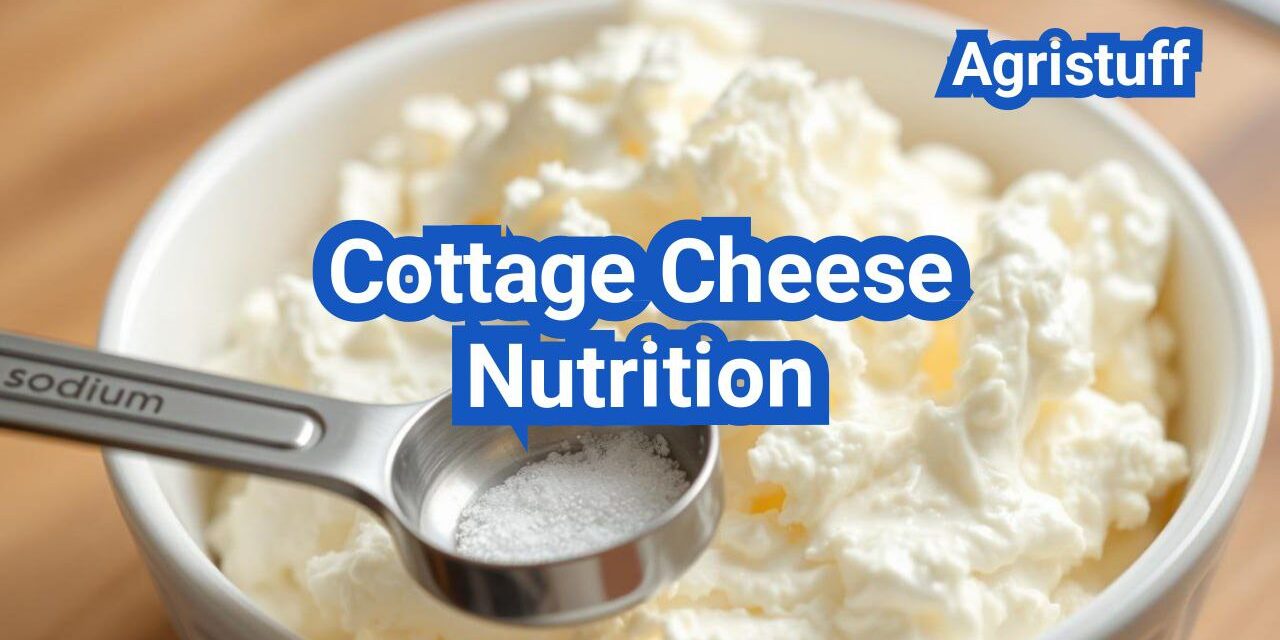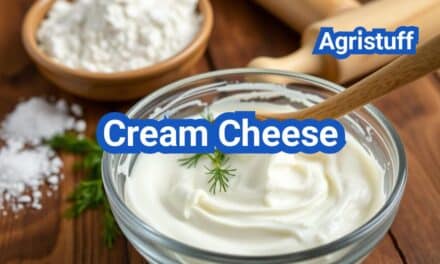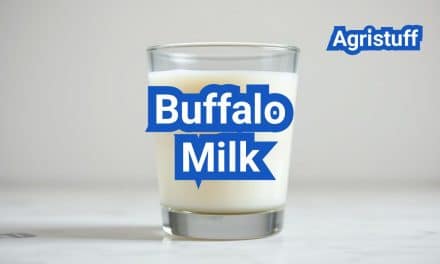This article does not contain medical advice
Cottage cheese is a nutrient-rich food that provides high-quality protein, calcium, and other essential nutrients, making it a great addition to a healthy diet.
The various types of cottage cheese, including low-fat and full-fat versions, offer flexibility for different dietary needs and preferences. Understanding the nutritional benefits of cottage cheese can help individuals make informed choices about their diet.
Key Takeaways
- Cottage cheese is high in protein and calcium.
- It is available in various types, including low-fat and full-fat versions.
- Cottage cheese can be a great addition to a healthy diet.
- Understanding nutrition facts is crucial for making informed dietary choices.
- Smart pairings can enhance the nutritional benefits of cottage cheese.
Understanding Cottage Cheese: What It Is and How It’s Made
Understanding cottage cheese begins with its production, a blend of tradition and technology. Cottage cheese is made from the curds of milk, which are separated from the whey and then processed to achieve the desired texture and consistency.
The Production Process of Cottage Cheese
The production of cottage cheese involves several key steps. Initially, milk is curdled using acid or rennet, causing it to separate into curds and whey. The curds are then cut into small pieces to release more whey, and the mixture is cooked gently to firm up the curds. After draining the whey, the curds are washed and pressed to remove any remaining whey, resulting in the characteristic cottage cheese texture.
Cottage cheese production can vary slightly depending on whether it’s full-fat, low-fat, or fat-free. The fat content is adjusted by adding cream or removing it during the production process.
Different Types of Cottage Cheese Available
Cottage cheese comes in various types, catering to different dietary needs and preferences. The main types include full-fat, low-fat, and fat-free cottage cheese. Full-fat cottage cheese contains more calories and has a richer taste, while low-fat and fat-free versions are preferred by those watching their calorie intake.
- Full-fat cottage cheese: Rich in taste, higher in calories.
- Low-fat cottage cheese: Balances taste and calorie content.
- Fat-free cottage cheese: Lower in calories, often preferred for dieting.
Additionally, there are flavored and unflavored versions, as well as organic and non-organic cottage cheese options available in the market.
Cottage Cheese Nutrition: Complete Macronutrient Breakdown

Cottage cheese stands out as a nutritious dairy product, offering a detailed nutritional label that highlights its macronutrient composition. “Cottage cheese is an excellent source of protein, making it a popular choice among fitness enthusiasts and health-conscious individuals,” as noted by nutrition experts.
Nutrition Facts Per 100g Serving
A 100g serving of cottage cheese typically contains around 98 calories, 11g of protein, 3g of carbohydrates, and 4g of fat. This breakdown makes it an attractive option for those monitoring their macronutrient intake.
Nutrition Label Explained
The nutrition label on cottage cheese provides detailed information on its macronutrient content, including calories, protein, fat, and carbohydrates. Understanding this label is crucial for making informed dietary choices.
For instance, the label will show the percentage of daily values for various nutrients. Protein content is particularly significant, as it contributes to muscle repair and growth.
Daily Value Percentages
Daily value percentages on the nutrition label indicate how much of the recommended daily intake of a particular nutrient is provided by a serving of cottage cheese. For example, a 100g serving might provide around 20% of the daily recommended protein intake.
“The daily value percentages help consumers understand the nutritional contribution of cottage cheese to their overall diet,” says a registered dietitian.
By examining the nutrition label and understanding the daily value percentages, individuals can better plan their meals to meet their nutritional needs.
Protein Content: Why Cottage Cheese Is a Powerhouse
Cottage cheese stands out as a nutritional gem, particularly due to its exceptional protein content. With approximately 28 grams of protein per cup, it is an excellent addition to a diet focused on muscle growth and recovery.
Protein Quality and Leucine Content
The protein in cottage cheese is of high quality, containing all essential amino acids necessary for the body. It is particularly rich in leucine, an amino acid that plays a crucial role in muscle protein synthesis. “Leucine is the key amino acid for stimulating muscle protein synthesis,” as noted by sports nutritionists. The high leucine content in cottage cheese makes it an effective food for muscle recovery and growth.
Protein Per Serving: Cup Measurements
Understanding the protein content per serving is essential for those tracking their daily protein intake. A single cup of cottage cheese provides about 28 grams of protein. This measurement can vary slightly based on the type of cottage cheese (low-fat, non-fat, etc.), but it generally remains a consistent and reliable source of protein.
How It Compares to Other Protein Sources
When comparing cottage cheese to other protein sources, its nutritional profile stands out. For instance, a cup of cottage cheese contains roughly the same amount of protein as three large eggs or a small steak. However, cottage cheese has the added benefit of being lower in calories and rich in calcium. Unlike many protein powders, cottage cheese is a whole food that provides additional nutrients beyond just protein, making it a more balanced choice for overall nutrition.
In conclusion, the high-quality protein content, coupled with its rich leucine levels, positions cottage cheese as a superior protein source. Whether you’re looking to support muscle growth, aid in recovery, or simply increase your protein intake, cottage cheese is an excellent dietary addition.
Caloric Breakdown: Understanding Cottage Cheese Calories

Understanding the caloric content of cottage cheese is crucial for managing your diet effectively. Cottage cheese is a versatile and nutrient-rich food that can be incorporated into various meal plans, but its caloric content varies significantly depending on the serving size and type.
Calories in Different Serving Sizes
The number of calories in cottage cheese can differ based on the serving size. Here’s a breakdown:
| Serving Size | Calories |
|---|---|
| 1/4 cup | 50-60 calories |
| 1/2 cup | 80-100 calories |
| 1 cup | 160-220 calories |
As shown, the caloric content increases with the serving size, making it essential to measure portions accurately when tracking calorie intake.
Calorie Efficiency for Protein Content
Cottage cheese is renowned for its high protein content, making it an efficient calorie source for those looking to increase their protein intake. The calorie efficiency of cottage cheese is relatively high because it provides a significant amount of protein while keeping calories in check, especially in low-fat versions.
Low-Calorie Cottage Cheese Options
For those watching their calorie intake, low-calorie cottage cheese options are available. These versions are designed to be lower in fat and calories, making them suitable for diet plans focused on weight management. When selecting a low-calorie cottage cheese, look for products labeled as “low-fat” or “non-fat” to ensure you’re getting the most calorie-efficient option.
By understanding the caloric breakdown of cottage cheese and choosing the right serving size, you can enjoy its nutritional benefits while managing your calorie intake effectively.
Fat Content and Types in Cottage Cheese
Understanding the fat content in cottage cheese is crucial for making informed dietary choices. Cottage cheese is available in various fat content options, including full-fat, low-fat, and fat-free versions, each catering to different nutritional needs and preferences.
Saturated vs. Unsaturated Fat Ratio
Cottage cheese contains both saturated and unsaturated fats. The ratio between these two types of fats can vary depending on the brand and type of cottage cheese. Generally, full-fat cottage cheese tends to have a higher proportion of saturated fats, while low-fat versions may have a higher proportion of unsaturated fats.
Saturated fats are typically solid at room temperature and are found in higher amounts in full-fat dairy products. Unsaturated fats, on the other hand, are usually liquid at room temperature and are considered a healthier option by many dietary guidelines.
| Type of Cottage Cheese | Saturated Fat (%) | Unsaturated Fat (%) |
|---|---|---|
| Full-Fat | 60 | 40 |
| Low-Fat | 30 | 70 |
| Fat-Free | 0 | 0 |
Full-Fat vs. Low-Fat vs. Fat-Free Options
The choice between full-fat, low-fat, and fat-free cottage cheese depends on individual dietary needs and preferences. Full-fat cottage cheese is rich in calories and fat but can be more satiating. Low-fat and fat-free versions are lower in calories and fat, making them suitable for weight management diets.
When choosing cottage cheese, consider the nutritional content per serving. For example, a 1-cup serving of full-fat cottage cheese can contain around 28 grams of protein and 110 calories, whereas the same serving size of low-fat cottage cheese might contain 28 grams of protein and 80 calories.
How Fat Content Affects Taste and Texture
The fat content in cottage cheese significantly affects its taste and texture. Full-fat cottage cheese tends to be creamier and richer in flavor, while low-fat and fat-free versions can be milder and less creamy.
The texture of cottage cheese is also influenced by its fat content. Higher fat content typically results in a smoother, more indulgent texture, whereas lower fat content can make the cottage cheese more crumbly or watery.
In conclusion, understanding the fat content and types in cottage cheese is essential for selecting the right product for your dietary needs. Whether you prefer full-fat, low-fat, or fat-free cottage cheese, being informed about the nutritional content and how it affects taste and texture can enhance your overall dining experience.
Sodium Concerns: Managing Salt in Your Diet

Cottage cheese is a nutrient-rich food, but its sodium content can be a concern for those monitoring their salt intake. While it’s an excellent source of protein and calcium, excessive sodium consumption can lead to health issues such as high blood pressure. Understanding the sodium content in cottage cheese and learning how to manage it is crucial for a balanced diet.
Sodium Content in Regular Cottage Cheese
The sodium content in regular cottage cheese can vary significantly between brands. On average, a half-cup serving of cottage cheese can contain anywhere from 350 to 450 milligrams of sodium. Checking the nutrition label is essential to make informed choices. Some brands may offer lower sodium options, making it easier to manage salt intake.
Low-Sodium Cottage Cheese Brands
For those concerned about sodium, there are low-sodium cottage cheese brands available. These brands have reduced sodium content, making them a healthier option. When shopping, look for labels that indicate “low sodium” or “reduced sodium.” Some popular brands offer these alternatives, providing a similar taste and nutritional profile with less salt.
Step-by-Step Rinsing Technique to Reduce Sodium
Another effective way to reduce sodium in cottage cheese is by rinsing it. Here’s a simple step-by-step guide:
- Place the cottage cheese in a fine-mesh strainer or cheesecloth.
- Rinse under cold running water, gently stirring the cheese to ensure even rinsing.
- Continue rinsing for about 30 seconds to 1 minute.
- After rinsing, let the cheese drain for a few minutes before serving.
This technique can help reduce the sodium content by up to 50%, making it a useful method for those on a strict low-sodium diet.
Cottage Cheese vs. Greek Yogurt: A Nutritional Comparison

In the world of high-protein dairy, cottage cheese and Greek yogurt stand out, but their nutritional profiles differ in significant ways. Both are popular among fitness enthusiasts and health-conscious individuals, but understanding their differences is crucial for making informed dietary choices.
Protein and Fat Differences
One of the primary considerations when comparing cottage cheese and Greek yogurt is their protein and fat content. Cottage cheese generally has a higher protein content compared to Greek yogurt, especially in its low-fat or non-fat versions. For instance, a cup of cottage cheese can contain around 28 grams of protein, whereas a cup of Greek yogurt typically contains about 20 grams.
| Nutritional Aspect | Cottage Cheese (1 cup) | Greek Yogurt (1 cup) |
|---|---|---|
| Protein Content | 28 grams | 20 grams |
| Fat Content (Low-Fat) | 2-4 grams | 5-7 grams |
| Calories | 80-110 kcal | 100-150 kcal |
The fat content also varies between the two, with cottage cheese often having less fat, especially in its low-fat versions. Greek yogurt, while still a good option, tends to have a slightly higher fat content, although this can vary based on the brand and type.
Texture and Culinary Applications
The texture of cottage cheese is typically curdy and thick, making it a great addition to salads, fruit parfaits, or as a topping for toast. Greek yogurt, on the other hand, has a smoother texture, which makes it ideal for smoothies, sauces, or as a base for dips.
Cottage cheese is often used in savory dishes, while Greek yogurt is versatile and can be used in both sweet and savory recipes. The choice between the two may also depend on personal preference regarding texture and the desired culinary application.
Which to Choose Based on Dietary Goals
Ultimately, the decision between cottage cheese and Greek yogurt depends on your specific dietary goals. If you’re looking for a higher protein content with lower fat, cottage cheese might be the better choice. For those seeking a versatile dairy product that can be used in a variety of dishes, Greek yogurt could be more suitable.
For individuals on a low-carb or keto diet, cottage cheese is often preferred due to its higher protein and lower carbohydrate content. On the other hand, Greek yogurt is a good option for those looking for a dairy product that can be easily incorporated into smoothies or as a snack on its own.
Lactose Content: Is Cottage Cheese Suitable for the Lactose Intolerant?

For individuals with lactose intolerance, understanding the lactose content in cottage cheese is crucial for making informed dietary choices. Lactose intolerance is a condition where people have symptoms due to the decreased ability to digest lactose, a sugar found in milk and other dairy products.
Lactose Levels Compared to Other Dairy
Cottage cheese contains lactose, but the amount can vary depending on the type and brand. Generally, cottage cheese has less lactose than milk but more than aged cheeses like cheddar or Swiss. The lactose content is typically around 2-3 grams per 1/2 cup serving.
In comparison to other dairy products, cottage cheese has a relatively moderate lactose level. For example, a cup of milk contains about 12-13 grams of lactose, while a cup of yogurt may have around 5-6 grams due to the live cultures that help break down lactose.
| Dairy Product | Lactose Content (grams per serving) |
|---|---|
| Cottage Cheese (1/2 cup) | 2-3 |
| Milk (1 cup) | 12-13 |
| Yogurt (1 cup) | 5-6 |
| Cheddar Cheese (1 ounce) | 0.4-0.5 |
Lactose-Free Cottage Cheese Options
For those who are lactose intolerant, there are lactose-free cottage cheese options available. Some brands offer lactose-free or low-lactose versions of their cottage cheese products. These are made either by adding lactase, the enzyme that breaks down lactose, or by using a production process that reduces the lactose content.
Lactose-free cottage cheese can be a good alternative for individuals who want to enjoy the nutritional benefits of cottage cheese without the discomfort of lactose intolerance.
Digestibility Factors to Consider
Several factors can influence the digestibility of cottage cheese for individuals with lactose intolerance. The presence of live cultures, similar to those in yogurt, can help break down some of the lactose, making it easier to digest. Additionally, the protein and fat content in cottage cheese may slow down the digestion of lactose, potentially reducing symptoms.
It’s also worth noting that some people with lactose intolerance may be able to tolerate small amounts of lactose without issues. Starting with a small serving size and monitoring tolerance can be a practical approach.
Health Benefits of Including Cottage Cheese in Your Diet

Cottage cheese is not just a dairy product; it’s a powerhouse of nutrition with various health benefits. Its rich nutritional profile makes it an excellent addition to a healthy diet, supporting overall well-being in multiple ways.
Muscle Building and Recovery
Cottage cheese is particularly beneficial for individuals looking to build or repair muscle due to its high-quality protein content. The protein in cottage cheese is rich in leucine, an amino acid that plays a crucial role in muscle protein synthesis.
Key benefits for muscle building and recovery include:
- High leucine content for enhanced muscle protein synthesis
- Slow-digesting protein for prolonged amino acid release
- Rich in essential amino acids necessary for muscle repair
Weight Management Support
Cottage cheese can be a valuable component of a weight management diet. Its high protein content helps in keeping you fuller for longer, reducing the likelihood of overeating.
| Nutritional Aspect | Benefit for Weight Management |
|---|---|
| High Protein Content | Promotes satiety and reduces hunger |
| Low Calorie Count | Contributes to a calorie deficit when part of a balanced diet |
| Rich in Nutrients | Supports overall nutritional balance during dieting |
Bone Health and Calcium Benefits
Cottage cheese is an excellent source of calcium, a mineral crucial for bone health. Regular consumption can support bone density, potentially reducing the risk of osteoporosis.
Calcium benefits include:
- Supporting bone density and strength
- Aiding in the prevention of osteoporosis
- Essential for muscle and nerve function
Incorporating Cottage Cheese into Different Diet Plans
Cottage cheese is a nutritious addition to many popular diets, including keto and vegetarian plans. Its high protein content and versatility make it an ideal component for various dietary needs.
Cottage Cheese for Keto and Low-Carb Diets
Cottage cheese is particularly beneficial for keto and low-carb diets due to its high protein and low carbohydrate content. It can be used as a snack or as an ingredient in keto-friendly recipes.
Nutritional Benefits for Keto Diets:
- High in protein to support muscle mass
- Low in carbs to maintain ketosis
- Rich in calcium for bone health
Vegetarian and High-Protein Diets
For vegetarians, cottage cheese is an excellent source of protein. It can be incorporated into meals and snacks to boost protein intake.
| Diet Type | Protein Content | Carb Content |
|---|---|---|
| Vegetarian | 28g per cup | 5g per cup |
| High-Protein | 28g per cup | 5g per cup |
Cottage Cheese for Weight Loss Plans
Cottage cheese can aid in weight loss due to its high protein content, which helps in satiety and muscle preservation during calorie restriction.
Tips for Weight Loss:
- Consume cottage cheese as a snack to reduce hunger
- Use it as a base for protein-rich smoothies
- Incorporate it into meals for added protein
Best Cottage Cheese Brands for Optimal Nutrition

Navigating the world of cottage cheese can be simplified by identifying top brands that prioritize nutrition. With numerous options available, consumers can make informed choices based on their dietary needs.
Top Brands with Low Sodium
For individuals monitoring their sodium intake, several cottage cheese brands offer low-sodium options. Good Culture is a notable brand that not only provides low-sodium cottage cheese but also focuses on using simple, natural ingredients.
| Brand | Sodium per Serving | Notable Features |
|---|---|---|
| Good Culture | 50mg | Low sodium, natural ingredients |
| Daisy | 100mg | Low sodium, creamy texture |
| Organic Valley | 70mg | Organic, low sodium |
Organic and Natural Options
Consumers seeking organic or natural cottage cheese have several brands to choose from. Organic Valley stands out for its commitment to organic farming practices, ensuring that their cottage cheese is not only nutritious but also produced with environmental sustainability in mind.
- Organic Valley: Offers organic cottage cheese with a focus on sustainable farming.
- Calcium-fortified options: Some brands like Horizon Organic offer calcium-fortified cottage cheese for added nutritional benefits.
Good Culture and Other Premium Brands
Good Culture is recognized for its high-quality cottage cheese that is both nutritious and delicious. Other premium brands like Smart Balance offer unique features such as balanced fat content and added protein.
“Good Culture’s cottage cheese is a game-changer for those looking for a healthy, tasty snack that aligns with their dietary goals.” – Nutrition Expert
When choosing a cottage cheese brand, consider factors such as sodium content, organic or natural ingredients, and additional nutritional benefits. By selecting a premium brand, consumers can enjoy a product that not only tastes great but also supports their overall health and wellness goals.
Smart Cottage Cheese Pairings for Enhanced Nutrition

To maximize the nutritional benefits of cottage cheese, it’s essential to explore smart pairing options. Cottage cheese is a versatile food that can be combined with a variety of ingredients to create balanced and nutritious meals.
Fruit Combinations for Balanced Meals
Pairing cottage cheese with fruits is a classic combination that offers a balanced mix of protein, carbohydrates, and fiber. Some popular fruit pairings include:
- Raspberries and blueberries for a antioxidant-rich snack
- Sliced peaches for a sweet and satisfying treat
- Pineapple chunks for a tropical twist
Savory Pairings for Protein-Rich Snacks
Cottage cheese can also be paired with savory ingredients to create protein-rich snacks that are perfect for post-workout recovery or as a mid-day pick-me-up. Consider combining it with:
- Chopped cucumbers and mint for a refreshing snack
- Sliced tomatoes and basil for a Mediterranean-inspired treat
- Chopped nuts or seeds for added crunch and nutrition
Herbs and Spices to Elevate Flavor
Herbs and spices can be used to add flavor to cottage cheese without adding extra calories. Some popular options include:
- Cinnamon or vanilla for a sweet flavor
- Garlic or chives for a savory taste
- Smoked paprika or cayenne pepper for a spicy kick
By incorporating these smart pairing options into your diet, you can enhance the nutritional value of cottage cheese and enjoy a more varied and satisfying eating experience.
Breakfast Ideas: Starting Your Day with Cottage Cheese

Cottage cheese is a versatile ingredient that can elevate your breakfast routine. It’s rich in protein, making it an excellent choice for those looking to start their day with a nutritious meal.
Quick Morning Recipes
For a quick and easy breakfast, try mixing cottage cheese with fruit such as berries or sliced peaches. The sweetness of the fruit pairs well with the creamy texture of cottage cheese, creating a balanced and satisfying meal.
You can also add some granola or nuts for extra crunch and nutrition. A sprinkle of cinnamon or vanilla extract can enhance the flavor without adding extra calories.
Overnight Preparations
Overnight preparations are another great way to enjoy cottage cheese for breakfast. Mix cottage cheese with milk, chia seeds, and a bit of honey, then refrigerate overnight. In the morning, you’ll have a delicious, protein-rich pudding.
This method allows the flavors to meld together, creating a creamy and refreshing breakfast. You can customize it with your favorite fruits or spices.
Cottage Cheese Toast Variations
Cottage cheese toast is a simple yet satisfying breakfast option. Spread cottage cheese on whole-grain toast, then top with sliced tomatoes, basil, or a drizzle of honey for added flavor.
For a savory twist, try pairing cottage cheese with avocado or smoked salmon on toast. The creaminess of the cottage cheese complements the richness of these toppings, making for a well-rounded breakfast.
| Breakfast Idea | Protein Content | Preparation Time |
|---|---|---|
| Cottage Cheese with Fruit | 28g | 5 minutes |
| Overnight Cottage Cheese Pudding | 30g | Overnight |
| Cottage Cheese Toast with Avocado | 25g | 10 minutes |
Meal Prep Strategies with Cottage Cheese
Effective meal prep with cottage cheese involves understanding its storage, preparation, and flavor maintenance. Cottage cheese is a convenient ingredient for meal prep due to its relatively long shelf life and versatility in recipes.
Storage Tips and Shelf Life
Proper storage is crucial to maintaining the quality of cottage cheese. It should be stored in the refrigerator at a temperature below 40°F (4°C). Unopened cottage cheese can last for several days past its expiration date, but once opened, it’s best consumed within 3 to 5 days. Always check for signs of spoilage before consumption.
Tips for Extending Shelf Life:
- Keep it sealed tightly after opening.
- Store it in the coldest part of the refrigerator.
- Avoid cross-contamination with other foods.
Batch Preparation Ideas
Cottage cheese can be prepared in batches for various meals and snacks. Here are some ideas:
| Meal Type | Cottage Cheese Recipe |
|---|---|
| Breakfast | Cottage cheese with fruit and nuts |
| Snack | Cottage cheese with cucumber and mint |
| Dessert | Cottage cheese with honey and berries |
Maintaining Texture and Flavor
To maintain the texture and flavor of cottage cheese during meal prep, consider the following:
Texture: Mix cottage cheese with ingredients just before serving to prevent it from becoming too watery or separated.
Flavor: Enhance the flavor with herbs, spices, or fruit. For example, adding a pinch of salt or a sprinkle of cinnamon can elevate the taste without adding calories.
By following these meal prep strategies, you can enjoy the nutritional benefits of cottage cheese while saving time during the week.
Making Cottage Cheese a Nutritious Part of Your Diet
Incorporating cottage cheese into your diet can be a simple yet effective way to boost your overall nutrition. With its high-quality protein, calcium, and other essential nutrients, cottage cheese is an excellent addition to a healthy diet. As discussed, cottage cheese offers numerous health benefits, from supporting muscle building and recovery to aiding in weight management and promoting bone health.
To make cottage cheese a staple in your nutritious meal plan, consider the various ways to incorporate it into your daily routine. From pairing it with fruits or herbs to using it in meal prep strategies, the versatility of cottage cheese makes it easy to enjoy its benefits. By choosing low-sodium or organic options and being mindful of portion sizes, you can maximize the nutritional value of this nutritious ingredient.
Embracing cottage cheese as a regular part of your diet can lead to a more balanced and nutritious eating plan. With its rich nutritional profile and adaptability in various recipes, cottage cheese stands out as a valuable component of a healthy lifestyle, supporting overall well-being and cottage cheese nutrition benefits.
FAQ
What is cottage cheese and how is it made?
Cottage cheese is a type of cheese that is made by curdling milk with acid or rennet, then draining off the whey. The curds are typically rinsed and may be mixed with a cream or milk to create a creamy texture.
What are the nutritional benefits of cottage cheese?
Cottage cheese is high in protein, low in calories, and rich in calcium, making it a nutritious addition to a variety of diets. It is also a good source of essential nutrients like phosphorus, potassium, and vitamin B12.
How much protein is in cottage cheese?
The amount of protein in cottage cheese varies depending on the type and brand, but on average, a 1/2 cup serving contains around 28 grams of protein.
Is cottage cheese high in sodium?
Some brands of cottage cheese can be high in sodium, but there are also low-sodium options available. Rinsing cottage cheese with water can also help reduce the sodium content.
Can I use cottage cheese as a substitute for Greek yogurt?
Yes, cottage cheese can be used as a substitute for Greek yogurt in many recipes, but keep in mind that it has a different texture and may affect the overall consistency of the dish.
Is cottage cheese suitable for people with lactose intolerance?
Cottage cheese contains some lactose, but the amount can vary depending on the type and brand. Lactose-free cottage cheese options are also available, making it a viable option for those with lactose intolerance.
How can I incorporate cottage cheese into my diet?
Cottage cheese can be enjoyed on its own as a snack, used as a base for smoothies, or incorporated into recipes like salads, omelets, and baked goods.
What are some healthy ways to pair cottage cheese with other foods?
Cottage cheese can be paired with fruit, nuts, and seeds for a balanced snack, or with herbs and spices to add flavor. It can also be used as a topping for oatmeal or yogurt.
Can I use cottage cheese for meal prep?
Yes, cottage cheese is a great option for meal prep as it can be stored in the refrigerator for several days and used as a protein-rich ingredient in a variety of dishes.
What are some popular brands of cottage cheese?
Some popular brands of cottage cheese include Good Culture, Daisy, and Breakstone’s. Look for brands that offer low-sodium and organic options.
How do I choose the best cottage cheese for my dietary needs?
Consider factors like protein content, sodium levels, and fat content when choosing a cottage cheese. Read labels carefully and look for certifications like “organic” or “non-GMO” if that’s important to you.
Conclusion of: Cottage Cheese Nutrition
Why cottage cheese nutrition matters for U.S. eaters
Cottage cheese nutrition is having a moment in the U.S. because it delivers high-quality dairy protein with a modest calorie budget, but the sodium can sneak up on you. Framed within national guidance, cottage cheese nutrition can fit a healthy pattern when portions and pairings are planned. If you’re optimizing your plate for long-term health, think about how cottage cheese nutrition supports the bigger picture—protein adequacy, micronutrient coverage, and keeping added sugars low—rather than viewing it in isolation. Dietary Guidelines for Americans
Serving size basics to compare cottage cheese nutrition
To line up labels, start with servings: many brands use 1/2 cup (about 113 g), and two cups of cottage cheese nutrition count as one cup from the Dairy Group. This makes it easier to compare cottage cheese nutrition with milk, yogurt, and cheese when you’re building balanced meals. If you’re tracking daily targets, anchor your total dairy choices—cottage cheese nutrition included—against age- and life-stage recommendations. USDA MyPlate – Dairy Group
Macros at a glance: protein, carbs, and fat in cottage cheese nutrition
For a typical 1/2-cup portion, cottage cheese nutrition generally provides ~90–110 calories, ~11–13 g protein, ~3–6 g carbohydrate (mostly lactose), and ~2–5 g fat depending on milkfat level. This macro profile is why cottage cheese nutrition shows up in weight management and sports diets: substantial protein with flexibility on fat. Always cross-check your specific brand’s Nutrition Facts to fine-tune the numbers you track. USDA FoodData Central – Cottage Cheese
How fat level changes cottage cheese nutrition
Fat level shifts the calorie density of cottage cheese nutrition. Nonfat (dry curd) trims most fat and calories while keeping protein similar; 2% offers a middle ground; whole-milk versions deliver a creamier mouthfeel with higher calories. If satiety is your priority, a slightly higher-fat cottage cheese nutrition choice may help you feel fuller—just fit it into your overall daily targets. USDA FoodData Central – 2% Cottage Cheese
Protein quality and leucine in cottage cheese nutrition
Dairy proteins are complete, and cottage cheese nutrition includes all essential amino acids—importantly leucine, the trigger for muscle protein synthesis. A practical takeaway: aim to get enough leucine at a snack or meal by combining cottage cheese nutrition with another protein source if needed (e.g., milk or eggs) to hit evidence-based targets used in sports nutrition. JISSN Position Stand: Protein & Exercise
Carbs and lactose: digesting cottage cheese nutrition
Lactose is dairy’s natural sugar, and cottage cheese nutrition contains moderate lactose per serving. Many people with lactose intolerance can still tolerate small amounts, especially with other foods and spread through the day. If symptoms persist, try smaller portions of cottage cheese nutrition, look for lactose-free varieties, or speak with a clinician about strategies. NIDDK – Lactose Intolerance
Sodium: reading the label for cottage cheese nutrition
Sodium varies widely across brands of cottage cheese nutrition. Use % Daily Value (%DV) to gauge it quickly: 5% DV or less per serving is low, while 20% DV or more is high. Many cottage cheese nutrition labels land around 15–20% DV for sodium per 1/2 cup, so comparing options can meaningfully reduce your day’s total. FDA – How to Use the Nutrition Facts Label
Practical ways to cut sodium while keeping cottage cheese nutrition
If sodium is your limiter, prioritize reduced-sodium or no-salt-added brands of cottage cheese nutrition when available. You can also balance saltiness with herbs, acids (lemon, vinegar), and unsalted crunchy add-ins like nuts and seeds. These simple swaps help you keep cottage cheese nutrition in your rotation without overshooting sodium goals. American Heart Association – Reduce Sodium
Pair potassium-rich foods with cottage cheese nutrition
Because many brands run salty, pairing cottage cheese nutrition with potassium-rich produce—tomatoes, leafy greens, bananas, berries—can support blood-pressure balance as part of a well-planned day. You’ll also add fiber, color, and phytonutrients to elevate cottage cheese nutrition from a plain cup to a complete mini-meal. CDC – Potassium & Blood Pressure
Cottage cheese nutrition vs. Greek yogurt
Both are high-protein, but Greek yogurt typically has far less sodium than cottage cheese nutrition for a similar protein hit. If you’re training and watching blood pressure, rotate them: use Greek yogurt when you need lower sodium, and lean on cottage cheese nutrition when you want a spoonable curd texture and savory mix-in potential. USDA FoodData Central – Greek Yogurt
Cottage cheese nutrition vs. ricotta
Ricotta is softer and often milder, with less protein per 1/2 cup and typically less sodium than many cottage cheese nutrition options. If your goal is protein density, cottage cheese nutrition usually wins; if you need lower sodium in a pasta filling or toast topper, ricotta can be a strategic swap. USDA FoodData Central – Ricotta
Shopping smarter: label cues for cottage cheese nutrition
When comparing brands, scan protein grams, sodium %DV, fat level, and added sugars if fruit is included—then choose the cottage cheese nutrition profile that fits your priorities. If you’re aiming for performance and satiety, higher protein may come first; if blood pressure is your focus, sodium may rule your pick. CDC – Know Your Limit for Added Sugars
Breakfast ideas to elevate cottage cheese nutrition
Build a morning bowl: cottage cheese nutrition plus berries, a spoon of oats, and chopped walnuts. Or go savory with cherry tomatoes, cucumber, and pepper on whole-grain toast. Each combo balances cottage cheese nutrition with fruit/veg and whole grains to hit multiple food groups in one easy meal. USDA MyPlate – What Is MyPlate?
Snack pairings that tame salt and boost cottage cheese nutrition
Use fresh produce and herbs to keep sodium in check while amplifying cottage cheese nutrition. Think pineapple and mint, peaches and cinnamon, or sliced radishes and chives. A drizzle of olive oil can add richness without salt, turning cottage cheese nutrition into a satisfying, heart-conscious snack. American Heart Association – Sodium Tips
Food safety and storage for cottage cheese nutrition
For meal prep, keep cottage cheese nutrition cold at the store and at home, refrigerate promptly, and use clean utensils each time. Unopened cottage cheese nutrition generally keeps about two weeks; once opened, finish within roughly a week and follow the package date. When in doubt, throw it out. FoodSafety.gov – FoodKeeper App
Lactose-smart strategies with cottage cheese nutrition
If lactose bothers you, try smaller portions of cottage cheese nutrition with meals, experiment with lactose-free versions, or consider lactase enzyme as advised by your clinician. Many people can tolerate modest amounts of lactose when spread across the day, allowing cottage cheese nutrition to stay on the menu. NIDDK – Working With Lactose Intolerance
Fitting cottage cheese nutrition into the bigger dietary picture
Zoom out and plan the day: if lunch or dinner will include salty items (e.g., deli meats or restaurant fare), choose a lower-sodium brand or smaller portion of cottage cheese nutrition at breakfast. Balance the plate with fruits, vegetables, and whole grains, and keep added sugars modest across beverages and snacks as you incorporate cottage cheese nutrition. Dietary Guidelines for Americans
Advanced tip: reducing sodium in cottage cheese nutrition
Some home cooks drain and briefly rinse curds to lower the saltiness of cottage cheese nutrition before mixing in herbs or fruit. Results vary by brand and style, so use taste as your guide and still plan your day’s sodium budget. If reducing sodium is a long-term priority, keep comparing labels for cottage cheese nutrition to find your best fit. PubMed – Research on Rinsing & Sodium
Final thought
Used thoughtfully, cottage cheese nutrition is a high-value staple: complete protein, useful micronutrients, and endless pairing options. If sodium is your constraint, let the label lead, pair with potassium-rich produce, and rotate with lower-sodium dairy like Greek yogurt. That way, cottage cheese nutrition works hard for your goals without working against your blood-pressure plan. FDA – Sodium in Your Diet
Sources & References
For deeper reading on cottage cheese nutrition—macros, label reading, and overall diet planning—see national, evidence-based resources that inform U.S. guidance and product labeling. These underpin the practical tips throughout this cottage cheese nutrition guide. Dietary Guidelines for Americans
Food-composition details used to frame cottage cheese nutrition, plus comparisons with other dairy foods, are accessible in federal databases that catalog brand and generic entries. Search by product name to verify your brand’s specifics for cottage cheese nutrition. USDA FoodData Central – Cottage Cheese
To interpret sodium and %DV on labels when evaluating cottage cheese nutrition, lean on FDA’s consumer education pages that walk through serving size, nutrients, and Daily Values. FDA – Using the Nutrition Facts Label
For lactose-related questions while incorporating cottage cheese nutrition, consult NIH’s digestive health resources, which outline symptoms, tolerance ranges, and strategies for inclusion. NIDDK – Lactose Intolerance
For culinary strategies that keep salt in check while enjoying cottage cheese nutrition, evidence-based sodium reduction tips from heart-health organizations can guide your pantry and cooking habits. American Heart Association – Sodium Tips










